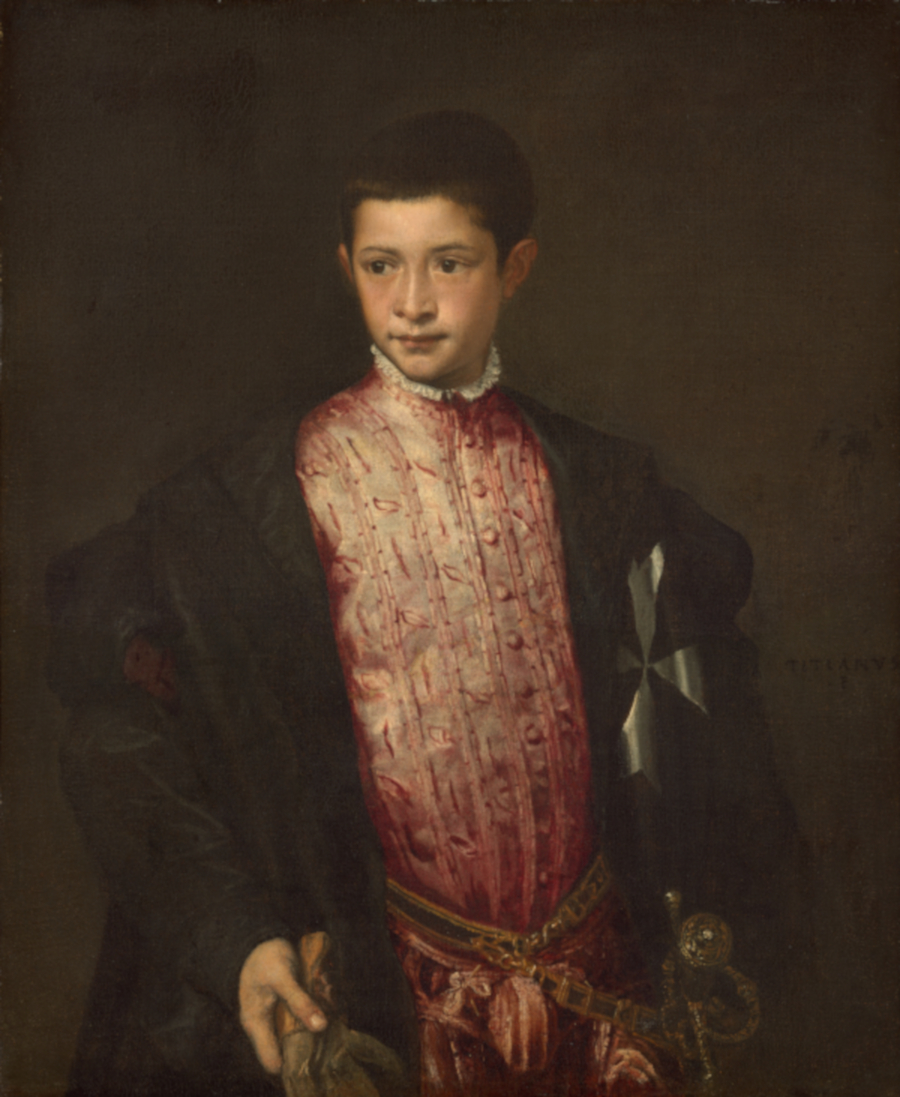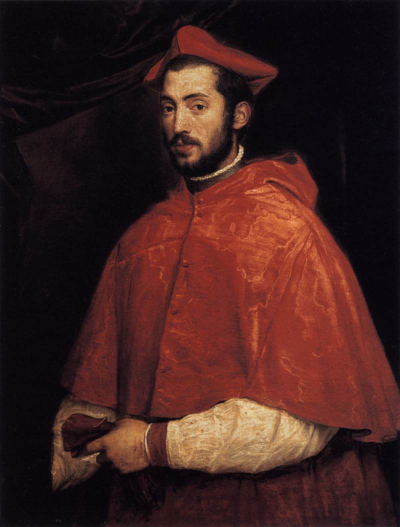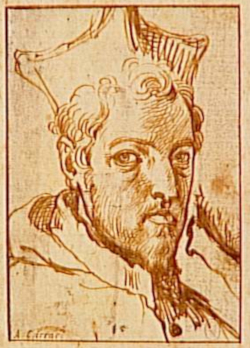
Ranuccio Farnese, by Titian. 1542. (National Gallery of Art, Washington; image on Wikimedia Commons)
A day after more than eleven million people worldwide switched on a television or computer to watch Pope Francis deliver the Urbi et Orbi blessing from an empty Saint Peter’s Square, EMLO remains focussed on the Eternal City. Despite numerous lockdowns in place across the world and all the associated complications of working from home, this week saw publication of the first installment towards a listing of the correspondence of Fulvio Orsini. The illegitimate son of a member of the Orsini family, Fulvio Orsini was born in 1529 and, as a scholar, librarian, and numismatist, he lived out his three-score-and-ten years in the midst of the remarkable creative and intellectual activity of sixteenth-century Rome.
Having changed his name (the reason behind this is not apparent) from Lucio Settimio three years previously, Fulvio was appointed librarian to a member of the Farnese family in 1558 and as a result he was to reside for the remainder of his life at the Palazzo Farnese. Although this building was designed by the architect Antonio da Sangallo the younger (d. 1546), Michelangelo (d. 1564), Jacopo Barozzi da Vignola (d. 1573), and Giacomo della Porta (d. 1602) each played a role in its completion. The interior of the palace was decorated by—amongst many others—Annibale Carracci (d. 1609).[1. For those who are interested, the portrait from which the Cultures of Knowledge project’s logo is taken (by kind permission of the York Museums Trust) is ascribed to Annibale Carracci—see the portrait of Cardinal Agucchi, York Museums Trust. Previously the portrait has been attributed to Annibale’s pupil Domenichino. Sadly, just two weeks ago another of Annibale’s paintings, A Boy Drinking, together with a 1616 study of a man on horseback by Anthony van Dyck and a Salvator Rosa landscape, was stolen from Oxford’s Christ Church Picture Gallery. Annibale may be one of my favourite artists, but it wasn’t me … honest! If anyone has information about the theft of these three paintings, please be in touch with the police or with the gallery.]
As librarian, Fulvio Orsini worked initially for Cardinal Ranuccio Farnese (1530–1565), the subject of a striking portrait by Titian (above). From 1565, he was employed by Ranuccio’s oldest brother Cardinal Alessandro Farnese (1520–1589), who was also painted by Titian (right). And, in the final decade of his life, his patron and employer was the brothers’ nephew, Cardinal Odoardo Farnese (1573–1626), whose likeness is known from a drawing attributed to Annibale Carracci (below).
The inventory to be found at present in Fulvio Orsini’s catalogue in EMLO lists the incoming correspondence contained in three Vatican Library manuscripts: Vat. lat. 4103, Vat. lat. 4104, and Vat. lat. 4105. Metadata have been collated by Dr Jan Machielsen of Cardiff University (and—until COVID-19 swept the continent—on a Humboldt fellowship in Dresden) with funding from the British Academy and in collaboration with the British School at Rome and the Biblioteca Apostolica Vaticana. Links from the records in EMLO to images of the manuscripts and printed copies of the letters have been provided wherever possible, and I hope so much you will find this correspondence a welcome distraction in these dark and difficult days.[2. I make no apologies for posting a blog peopled with portraits. Portraits are my way of escaping the grim news at present. I hope you enjoy these glimpses of Fulvio Orsini’s employers.] Wherever you may be keep well, stay at home, and help thereby to protect lives.


